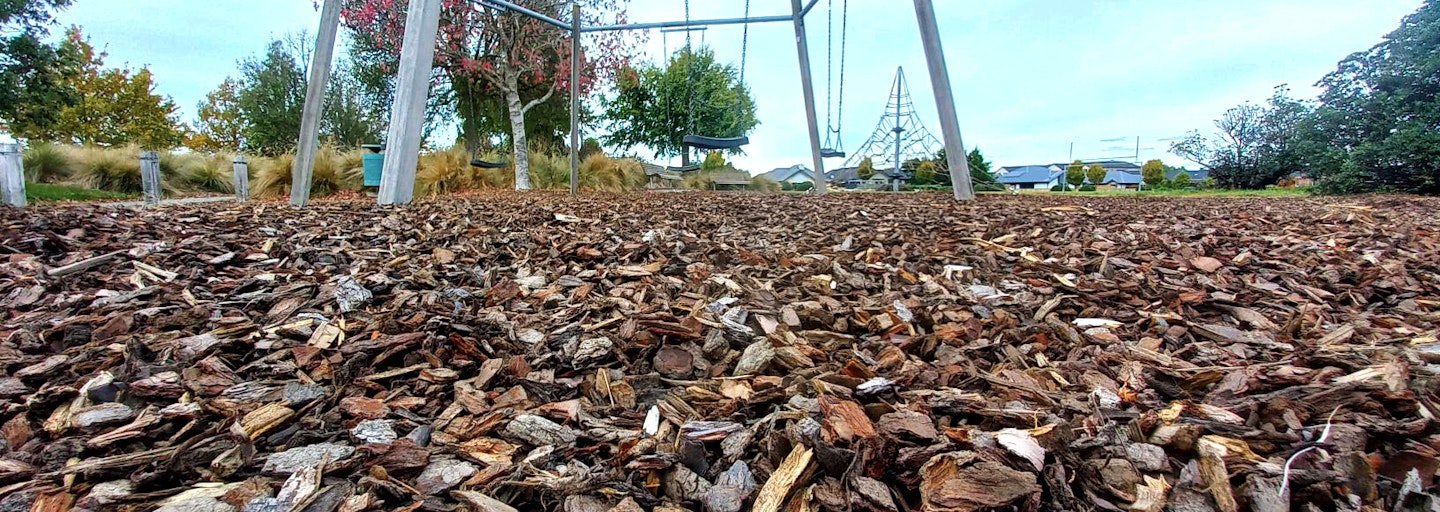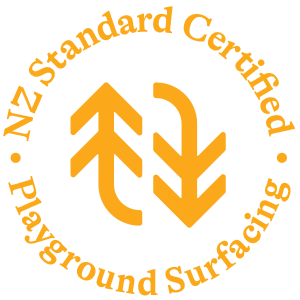Playground safety is the number one factor for Delta, who uses Azwood’s certified playground surfacing
Public playgrounds need to be certified for playground safety and meet the criteria of the NZS 5828:2015 standard. Delta, uses Bounce Bark® Chip, a natural playground bark.
- Customer since2020
- Product usedBounce® bark chip
Overview
Delta manages 97 playgrounds around the Waimakariri district. Every playground needs to be certified to meet the criteria of the NZS 5828:2015 standard
This standard specifies the requirements for impact-absorbing playground surfacing materials, which can help minimize the risk of injury if a child falls from playground equipment. By adhering to this standard, playground operators can promote safe play environments for children.
Background
Delta Utility Services provide contract work to the Waimakariri District council for a range of things, including public playground projects and maintenance.
It is their role to manage new playground projects, monitor all the playgrounds to ensure they are compliant and organise top-ups when required.
Azwood came along at the perfect time. I had bags on my desk of bark from another supplier which was sharp and we were getting complaints. I was in a meeting with the council and we were given a bag of Azwoods bounce bark chip… the council instantly approved it for all future projects and top-ups
Tony Auld
Delta
Challenges
The bark they were using as playground surfacing was getting complaints from concerned parents. The main issues being the occurrence of splinters and sharp edges, posing potential safety hazards to children playing on the equipment.
These complaints raised concerns about the well-being of children and their enjoyment whilst playing, prompting Delta to seek a more reliable and child-friendly surfacing solution.
Assessment
Bounce bark chip is one of the top choices for playgrounds. It offers superior impact protection for kids, ensuring they can engage in active play without risk of injury. What's more, Bounce Bark® Chip is sustainably sourced from New Zealand forests, making it an environmentally-friendly alternative to synthetic playground surfaces.
Bounce Bark® Chip is clean and free of transferable mud, making it a low-maintenance option for playgrounds. Its small size is particularly beneficial for young children, as it provides a more comfortable and secure surface for their growing feet.
What is the criteria for certified bark?
The New Zealand government has mandated that playground surfaces must comply with the NZS 5828:2015 standard to ensure the safety of children using them.
According to the NZS 5828:2015 Standards, the criteria for playground surfaces include:
Critical Fall Height (CFH): The height at which a fall from playground equipment could cause a severe head injury. The playground surface must be able to absorb the impact of a fall and reduce the likelihood of injury.
Impact attenuation: The ability of the playground surface to reduce the impact of a fall. It is measured by conducting a series of tests and analyzing the data obtained from the tests.
Durability: The playground surface must be durable enough to withstand weather conditions and continuous use.
Maintenance: The playground surface must be maintained regularly to ensure that it remains safe and effective.
Environmental impact: The playground surface must be environmentally friendly and sustainable.
Drainage: The playground surface must have appropriate drainage to prevent the formation of puddles and other hazards.
Outcome
Tony confirmed that the public love the new and improved bark that is free from sharp edges and from a contractor's perspective, it’s very easy to apply.
Due to Bounce® Bark Chip being a natural product, once it has been used as playground surfacing and needs to be replaced, Delta removes the bark and repurposes it as mulch in community gardens creating a circular economy.
Delta works with Azwood to top up their playgrounds roughly every 2 ½ years. They apply fresh bark at 300mm deep to ensure it is compliant.
Certified playground surfacing range
Related articles

Social media
More from Azwood
Follow us on social media to stay connected and be the first to hear our latest news.


